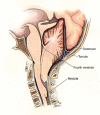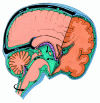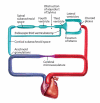The definition and classification of hydrocephalus: a personal recommendation to stimulate debate
- PMID: 18211712
- PMCID: PMC2263019
- DOI: 10.1186/1743-8454-5-2
The definition and classification of hydrocephalus: a personal recommendation to stimulate debate
Abstract
The aim of this review is to refine the definition and classification of hydrocephalus as a preview to developing an international consensus on the nomenclature of this complex condition. This proposed definition and classification is based on my own work in this area and is intended to promote a debate on the concepts presented.A literature review of contemporary definitions and classifications of hydrocephalus, and of the historic context in which these concepts developed, is presented. Based on new technology and understanding of hydrocephalus, the rationale for nomenclature is also discussed.Currently, there is no recognized definition of hydrocephalus. The failure to agree on a working definition impedes progress in understanding the pathophysiology and treatment of hydrocephalus. There are many proposed classifications, each with its own starting point in terms of the definition of the condition. This author recommends that the following definition be used as a starting point to develop a consensus statement defining hydrocephalus: "Hydrocephalus is an active distension of the ventricular system of the brain resulting from inadequate passage of cerebrospinal fluid from its point of production within the cerebral ventricles to its point of absorption into the systemic circulation." Such a definition can be used to develop a rational classification consistent with observations from contemporary neuroimaging and can lead to testable hypotheses. It is concluded that hydrocephalus is a complicated neurologic disorder with many causes and methods of treatment. Clinicians and basic scientists must agree on a working definition of the condition to be able to interpret results from different investigators. Reaching a consensus on a working definition and functional classification should be a high priority for researchers in this field.
Figures




References
LinkOut - more resources
Full Text Sources

